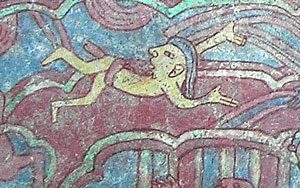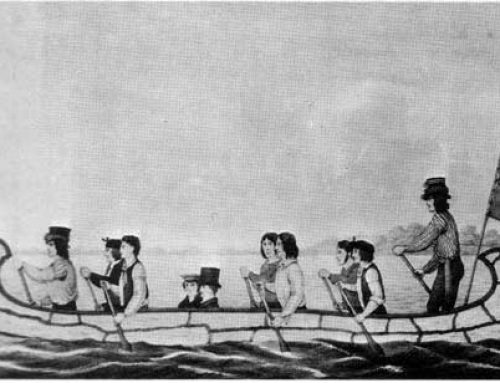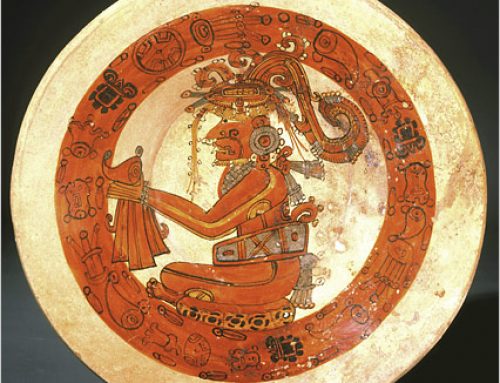
Aztec swimmer from Teotihuacan (ca. 500 AD)
The first people who came to the Americas probably already knew how to swim, as they got their food from fishing and gathering shellfish and seaweed. Aztec paintings from the 500s AD show swimmers using a flutter kick and possibly a crawl stroke.

Arawak or Carib woman and children swimming in the ocean (Trinidad, Drake Manuscript, ca. 1586 AD)
Far away off the Atlantic coast, people were also swimming in the ocean around the Caribbean islands. On these islands, where swimming was so important for everything people did, even little children were good swimmers.

African-American pearl divers (Venezuela, ca. 1600 AD)
When European invaders came to the Americas in the 1600s, most of them didn’t know how to swim, because people had stopped swimming in Europe by that time. Some boys did swim a little, especially poor boys who had more freedom, but they didn’t know the crawl stroke and could only dog-paddle. Girls probably didn’t get much chance to swim.
To do jobs that required swimming, these Europeans first forced Native Americans to swim for them. Then, when most of the Native people died, they enslaved West African people and brought them to the Americas to swim. Some of these West African people worked as pearl divers off the coast of Brazil and Venezuela.

Hidatsa people swimming crawl stroke (George Catlin, Missouri 1833 AD)
A Massachusetts law of 1773 said that people couldn’t go swimming on Sundays (because they should go to church instead), so at least some people knew how to swim. About the same time, Benjamin Franklin knew how to swim.
Everybody else in America kept right on swimming though, diving, and using the crawl stroke. The best swimmers in North America were Native Americans and Africans. Many Africans escaped from slave ships by jumping overboard and swimming to shore. In the 1700s, the African-American man Yarrow Mahmout was said to be the best swimmer ever seen on the Potomac River. Africans could swim much better than Europeans could. When Lewis and Clark and York and Sacagawea travelled west on their expedition in 1811, most of the Europeans couldn’t swim, but the African-American man York and the Shoshone woman Sacagawea both were good swimmers.

Public swimming pool (1937 AD)
In the later 1800s, white people in the United States and Canada began to learn to swim again, imitating the new fashion for swimming in England. By the 1920s, respectable people swam in public swimming pools. At the same time, though, people of color were not allowed to come to the new public swimming pools in cities, and so fewer and fewer African-American and Native people learned how to swim. White people even made up stories that African-American people couldn’t swim – that their bodies weren’t right for swimming (which is not true).

President Obama swimming with his daughter
Even today, there are not many pools where African-American people live, and fewer than one out of three African-American children and fewer than half of Latino and Native children can swim, while about two out of three white children can swim. But governments in North America are trying to change things. In 1964, the Civil Rights Act opened swimming pools to all people. In 1994, some Hawaiian beaches were protected so native Hawaiians could swim there. And in 2016, an African-American woman, Simone Manuel, won a gold medal in swimming at the Olympic Games.




